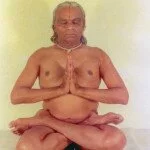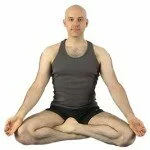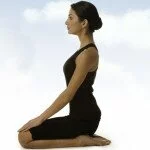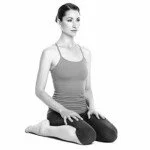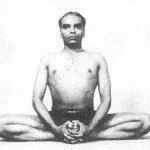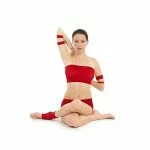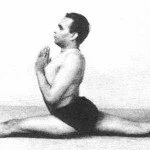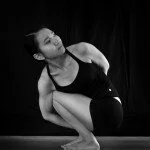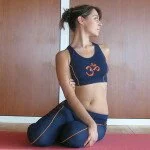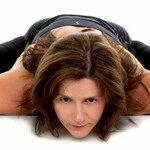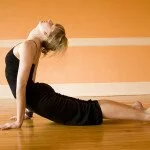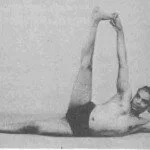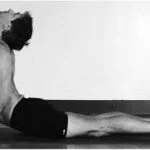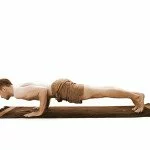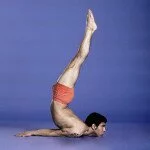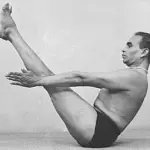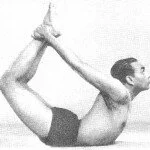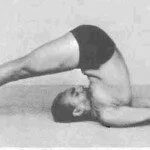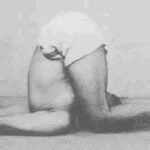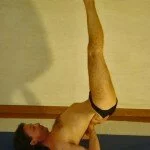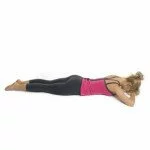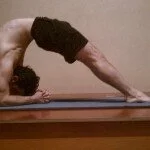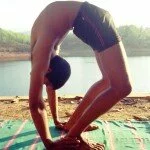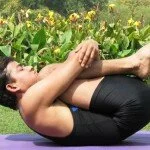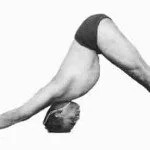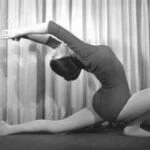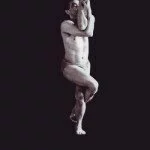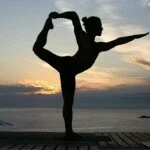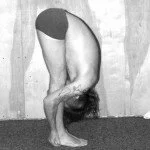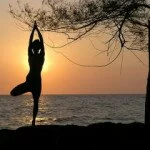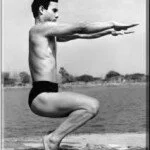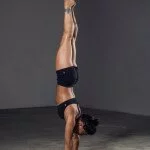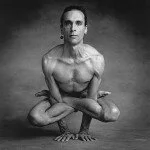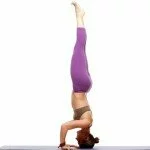Ancient Yoga books are saying that there are Eighty-four thousand living beings on our planet. So Yoga poses are also that much. But for understanding this much Yoga poses is too hard for a human being, so it is been reduced to Eighty-four main poses (Yogasanas) by old scientists (Rishi).
This is smartly divided into different methods so that all types of human beings can select their own method and practice it. Below are a few methods that can be subdivided into different categories. You can select an appropriate method you like and we will explain how you can acquire that method.
Sun Salutation | Sitting Poses | Lying Poses |
Standing Poses | Balancing Poses | Resting Poses |
Sukhasana (सुखासन):-
Sukhasana (soo-kah-sah-nah; Sanskrit: सुखासन; IAST: Sukhāsana), Easy Pose, Decent Pose or Pleasant Pose is an asana practiced in yoga…..Read More
Padmasanam (पद्मासन):-
The Lotus Position (Sanskrit: पद्मासन [pɐd̪mɑːs̪ɐn̪ɐ], IAST: padmāsana) is a cross-legged sitting asana originating in meditative practices of ancient India, in which the feet are placed on the opposing thighs….Read More
Siddhasana (सिद्धासन):-
Siddhasana (Sanskrit: सिद्धासन; IAST: siddhāsana) or Accomplished Pose is an asana. The name comes from the Sanskrit words siddha (सिद्धा; siddha) meaning both “perfect” and “adept”,[2] and asana (आसन; āsana) meaning “posture” or “seat”. Read More
Vajrasana (वज्रासन):-
Vajrasana (vahj-rah-sah-nah[needs IPA]; Sanskrit: वज्रासन; IAST: vajrāsana), Adamantine Pose, Diamond Pose, Kneeling Pose, Pelvic Pose and Thunderbolt Pose is an asana. Read More
Simhasana (सिंहासन):- Simhasana (Sanskrit: सिंहासन; IAST: Siṁhāsana) or Lion Pose is an asana.
The name comes from the Sanskrit words simha (सिंहा) meaning “lion”, and asana (आसन, āsana) meaning “posture” or “seat”…Read More
Virasana (वीरासन):-
Virasana (vir-ah-sah-nah[needs IPA]; Sanskrit: वीरासन; IAST: vīrāsana) or Hero Pose is an asana.The name comes from the Sanskrit words vira meaning “man” or “hero” or “chief”, and asana (आसन, Āsana) meaning “posture” or “seat”..Read More
Dandasana (दण्डासन):-
Dandasana (IPA: [dəɳɖɑːsənə] dahn-dah-sah-nah; Sanskrit: दण्डासन; IAST: Daṇḍāsana) or Staff Pose is an asana.The name comes from the Sanskrit words Danda (दन्द, Danda) meaning “stick”, and Asana (आसन, Āsana) meaning “posture”…..Read More
Baddha Konasana (बद्धकोणासन):- Baddha Konasana (bah-dah koh-nah-sah-nah; Sanskrit: बद्धकोणासन ; IAST: baddhakoṇāsana), Bound Angle Pose or Cobbler Pose (after the typical sitting position of Indian cobblers when they work) is an asana…..Read More
Balasana (बालासन):-
Balasana (Sanskrit: बालासन), Child’s Pose or Child’s Resting Pose is an asana.
The name comes from the Sanskrit words bala meaning “child” and asana (आसन) meaning “posture” or “seat”…..Read More
Ardha Matsyendrasana (अर्धमत्स्येन्द्रासन):-
Ardha Matsyendrasana (Sanskrit: अर्धमत्स्येन्द्रासन; IAST: Ardha Matsyendrāsana), Half Lord of the Fishes Pose, Half Spinal Twist Pose or Vakrasana is an asana.
The asana usually appears as a seated spinal twist with many variations, and is one of the twelve basic asanas in many systems of Hatha Yoga. ….Read More
Garbhasana (गर्भासन):-
Garbhasana (Sanskrit: गर्भासन; IAST: Garbhāsana), Embryo Pose, Foetus Pose or Fetus Pose is an asana.
The name comes from the Sanskrit words garbha meaning “embryo” or “fetus” and asana (आसन) meaning “posture” or “seat”.
During the performance of this asana, the body takes on the shape of a fetus.. ….Read More
Gomukhasana (गोमुखासन):-
Gomukhasana (goh-moo-kha-sah-nah; Sanskrit: गोमुखासन; IAST: Gomukhāsana) or Cow Face Pose is an asana.
The name comes from the Sanskrit words Go (गो, Go) meaning “cow”, Mukha (मुख, mukha) meaning “head” or “mouth”, and Asana (आसन, Āsana) meaning “posture” or “seat”…..Read More
Hanumanasana (हनुमानासन):-
Hanumanasana (Sanskrit: हनुमानासन) or Monkey Pose is an asana.
The name comes from the Sanskrit words Hanuman (a divine entity in Hinduism who resembles a monkey) and asana (posture) and commemorates the giant leap
made by Hanuman to reach the Lankan islands from the mainland of India……Read More
Pasasana (पाशासन):-
Pasasana (Sanskrit: पाशासन; IAST: pāśāsana) or Noose Pose is an asana.
The name comes from the Sanskrit words pasa (or pasha) (पाश, pāśa) meaning “noose” or “snare” and asana (आसन) meaning “posture” or “seat”…..Read More
Bharadvajasana (भरद्वाजासन):-
Bharadvajasana (IPA: [bʱɐrɐd̪ʋɑːɟɑːsɐnɐ]; Sanskrit: भरद्वाजासन; IAST: Bharadvājāsana) is an āsana.
The asana dedicated to sage Bharadvāja who was one of the Saptarshis (Seven Great Sages Rishi) in the present Manvantara; the others being being Atri,
Vashishtha, Vishvamitra, Gautama, Jamadagni and Kashyapa……Read More
Janusirsasana (जानु शीर्षासन):-
Janu Sirsasana (jah-noo shur-shah-sah-nah; Sanskrit: जानु शीर्षासन; IAST: jānu śīrṣāsana), Head-to-Knee Pose, Head-to-Knee Forward Bend, Head of the Knee Pose or Head-on-Knee Pose is an asana. It is part of the Ashtanga Yoga Primary Series and is commonly practiced as a seated asana in many styles of yoga……Read More
Paschimottanasana (पश्चिमोत्तानासन):-
Paschimottanasana (pash-ee-moh-tan-ahs-anna; Sanskrit: पश्चिमोत्तानासन; IAST: paścimottānāsana), Seated Forward Bend or Intense Dorsal Stretch is an asana…….Read More
Upavistakonasana:-
Upavistakonasana (oo-pah-VEESH-tah cone-AHS-anna)
upavistha = seated, sitting
kona = angle ……Read More
Urdhvamukhasvanasana (ऊर्ध्वमुखश्वानासन):-
Ūrdhva mukha śvānāsana (Sanskrit: ऊर्ध्वमुखश्वानासन; Sanskrit pronunciation: [urd̪ʱhvə mukʰə ɕʋɑːn̪ɑːs̪ən̪ə]; IAST: Urdhva mukha śvānāsana) or Upward Facing Dog Pose is an asana…….Read More
Vasishthasana (वसिष्ठासन):-
Vasishtha (वसिष्ठ, Vasiṣṭha) = literally: “the richest”; name of a famous vedic saint. According to scriputes he owned Nandini, the legendary cow of prosperity. ……Read More
Anantasana (अनन्तासन):-
Anantasana (Sanskrit: अनन्तासन; IAST: Anantāsana), Vishnu’s Couch Pose, Eternal One’s Pose, or Side-Reclining Leg Lift is an asana…….Read More
Bhujangasana (भुजङ्गासन):-
Bhujangasana (/ˈbuː.dʒænˈɡɑː.sɑː.nɑː/; Sanskrit: भुजङ्गासन; IAST: Bhujaṅgāsana) or Cobra Pose is an asana……Read More
Chaturanga Dandasana (चतुरङ्ग दण्डासन):-
Chaturanga Dandasana (Sanskrit: चतुरङ्ग दण्डासन; Sanskrit pronunciation: [tɕɐtuɽɐŋɐ dɐnɖɐːsɐnɐ]; IAST: Caturaṅga Daṇḍāsana) or Four-Limbed Staff Pose is an asana……Read More
Salabhasana (शलभासन)
Salabhasana, Shalabhasana (Sanskrit: शलभासन; IAST: Śalabhāsana), Locust Pose or Grasshopper Pose is an asana.
The name comes from the Sanskrit words “shalabh” meaning “grasshopper”…..Read More
Matsyasana (मत्स्यासन)
Matsyasana (mahtz-yah-sah-nah; Sanskrit: मत्स्यासन; IAST: Matsyāsana) or Fish Pose is an asana.
It is commonly considered a counterasana to Sarvangasana, or shoulder stand, specifically within the context of the Ashtanga Vinyasa Yoga Primary Series….Read More
Navasana (नावासन):-
Navasana (“Boat Pose”) is an asana. The name comes from the Sanskrit words nava meaning “boat” and asana (आसन) meaning “posture” or “seat”. In its literal translation, “Boat Pose”, the body could be imagined to resemble a boat, entirely balanced on the buttocks…..Read More
Dhanurasana (धनुरासन):-
Dhanurasana (dah-noo-rah-sah-nah; Sanskrit: धनुरासन; IAST: Dhanurāsana), Bow Pose or sometimes Urdva Chakrasana (Upward Wheel Pose) is an asana……Read More
Halasana (हलासन):-
Halasana (hah-lah-sah-nah; Sanskrit: हलासन; IAST: Halāsana) or Plow Pose is an asana.
The name comes from the Sanskrit words hala (हला) meaning “plow” and asana (आसन) meaning “posture” or “seat”…….Read More
Karnapidasana (कपोतासन)
Karnapidasana (IPA: [Karṇapīḍāsana]); IAST: Karṇapīḍāsana; Sanskrit: कपोतासन , is an inverted supine forward bend asana. Karṇapīḍāsana is also known as Raja Halasana and is closely to Halasana (plow pose) which it is sometimes considered a variant of……..Read More
Sarvangasana (sahr-vahn-gah-sah-nah[1][needs IPA]; Sanskrit: सर्वाङ्गासन; IAST: sarvāṅgāsana) or Shoulderstand is an āsana. Many variations of the Shoulderstand exist, the likely most common to be taught is Supported Shoulderstand (Salamba Sarvangāsana). Sarvangāsana is nicknamed “queen” or “mother” of all the asanas……..Read More
Viparita Karani (विपरीतकरणी):-
Viparita Karani (Sanskrit: विपरीतकरणी ; IAST: viparītakaraṇī) or Upside-Down Seal is an asana.
The name comes from the Sanskrit words viparita meaning “inverted” or “reversed”, and karani meaning “doing” or “making” and asana (आसन; āsana) meaning “posture” or “seat”………Read More
Makarasana (मकरासन):-
Makarāsana (Sanskrit: मकरासन) or Crocodile Pose is an asana.
The name comes from the Sanskrit words makara meaning “crocodile” and asana (आसन) meaning “posture” or “seat”……….Read More
Savasana (shah-vah-sah-nah; Sanskrit: शवासन; IAST: śavāsana), or Corpse Pose is an asana.
The name comes from the Sanskrit words Shava (शव, Śava) meaning “corpse” and Asana (आसन, Āsana) meaning “posture” or “seat”……….Read More
Bhekasana (भेकासन):-
Bhekasana (Sanskrit: भेकासन; IAST: Bhekāsana), Mandukasana or Frog posture is an asana.The name comes from the Sanskrit words Bheka (भेका, bheka) meaning “frog” and asana (आसन) meaning “posture” since the asana resembles a frog………..Read More
Dwi Pada Viparita Dandasana (द्विपदविपरितदन्दसन):-
Dwi Pada Viparita Dandasana (Sanskrit: द्विपदविपरितदन्दसन; IAST: Dvi Pāda Viparīta Daṇḍāsana) or Two-Legged Inverted Staff Pose is an asana and is a combination of Sirsasana (headstand) and Urdhva Dhanurasana (upward facing bow pose)………..Read More
Chakrasana (चक्रासन):-
Chakrasana (Sanskrit: चक्रासन IAST: Chakrāsana, Wheel Pose), also called Urdva Dhanurasana (Sanskrit: ऊर्ध्वधनुरासन; IAST: Ūrdhvadhanurāsana, Upward-Facing Bow Pose) is an asana. It is a backbend and part of the finishing sequence in the Primary Series of Ashtanga Yoga………..Read More
Pavanamuktasana:-
Pavanamuktasana is pronounced as PUH-vuhn-mukt-AAHS-uh-nuh.
This yoga pose, as its name suggests, is excellent for releasing abdominal gas………..Read More
Adho Mukha Svanasana (अधोमुखश्वानासन):-
Adho mukha śvānāsana, adho mukha shvanasana (IPA: [əd̪ʱoː mukʰə ɕʋɑːn̪ɑːs̪ən̪ə], ah-doh moo-kah shvah-nah-sah-nah; Sanskrit: अधोमुखश्वानासन; IAST: Adho Mukha Śvānāsana), downward-facing dog Pose, downward dog or down dog is an asana………..Read More
Supta Virasana (सुप्तवीरासन):-
Supta Virasana (Sanskrit: सुप्तवीरासन; IAST: suptavīrāsana) or Reclined Hero Pose is an asana.
The name comes from the Sanskrit words supta (सुप्त) meaning “reclined” and asana (आसन; āsana) meaning “posture” or “seat”……….Read More
Anjeyerasana (अञ्जयरासन):-
Anjaneyasana (IPA: [ɐɲneːːɟɐrɑːsɐnɐ]; Sanskrit: अञ्जयरासन; IAST: Añjeyarāsana), Crescent Moon, or Low Lunge is an asana. Anjaneyasana is used in Surya Namaskara…….ReadMore
 Ardha Candrasana (अर्धचन्द्रासन):-
Ardha Candrasana (अर्धचन्द्रासन):-
Ardha Chandrasana (Sanskrit: अर्धचन्द्रासन; IAST: Ardha Candrāsana) or Half Moon Pose is an asana.
The name comes from the Sanskrit words Ardha meaning “half”, Candra or Chandra (चन्द्र) meaning “moon” or “luminous, as in the light from the moon”, and Asana (आसन, Āsana) meaning “posture” or “seat”……ReadMore
Garudasana (गरुडासन):-
Garudasana (gah-roo-dah-sah-nah; Sanskrit: गरुडासन; IAST: Garuḍāsana) or Eagle Pose is an asana.
The name comes from the Sanskrit words garuda meaning “eagle”, and asana meaning “posture” or “seat”……ReadMore
Natarajasana (Sanskrit: नटराजासन; IAST: Naṭarājāsana) or Lord of the Dance Pose is an asana.
The name comes from the Sanskrit words nata meaning “dancer”, raja meaning “king” and asana (आसन) meaning “posture” or “seat”.Nataraja is one of the names given to the Hindu God Shiva in his form as the cosmic dancer…….ReadMore
Padahastasana (पादहस्तासन):-
Padahastasana (/ˌpɑrəˌhɑːstəˈɑːsənə/; Sanskrit: पादहस्तासन; Sanskrit pronunciation: [pɑːd̪ɐɦɐs̪t̪ɑːs̪ɐn̪ɐ]; IAST: pādahastāsana) or Hand Under Foot Pose is an asana…….ReadMore
Parivrtta Baddha Parsvakonasana
Parivrtta Baddha Parsvakonasana (par-ee-vrt-tah parsh-vah-cone-AHS-anna) parivrtta = to turn around, revolve; parsva = side, flank; kona = angle……ReadMore
Vriksasana (वृक्षासन):-
Vriksasana (vrik-shah-sə-nə; Sanskrit: वृक्षासन; IAST: vṛkṣāsana) or Tree Pose is an asana.
The name comes from the Sanskrit words vriksa or vriksha (वृक्ष, vṛkṣa) meaning “tree” and asana (आसन) meaning “posture”…….ReadMore
Utkatasana (उत्कटासन):-
Utkatasana (oot-kah-tah-sah-nah; Sanskrit: उत्कटासन; IAST: Utkaṭāsana), Chair Pose, Fierce Pose, Hazardous Pose, Lightning Bolt Pose, Wild Pose or in Bikram Yoga Awkward Pose is an asana……..ReadMore
Virabhadrasana (वीरभद्रासन):-
Virabhadrasana (IPA: [ʋiːrɐbʱɐd̪rɑːsɐnɐ]; Sanskrit: वीरभद्रासन; IAST: Vīrabhadrāsana) or Warrior Pose is an asana commemorating the exploits of a mythical warrior……..ReadMore
Adho Mukha Vrksasana
Adho Mukha Vrksasana (ah-doh moo-kah vriks-SHAHS-anna) adho mukha = face, downward (adho = downward; mukha = face), vrksa = tree
the handstand, translating to Downward-facing Tree Pose. In capoeira it is named bananeira……Read More
Astavakrasana (अस्तवक्रसन):-
Astavakrasana (Sanskrit: अस्तवक्रसन; IAST: Aṣṭāvakrāsana), Eight angled Pose or Astavakrasana is an asana…….Read More
Bakasana (बकासन):-
Bakāsana (Sanskrit: बकासन, Crane Pose), often used interchangeably with Kakasana (Sanskrit: काकासन, Crow Pose) is an asana. In all variations, Crane/Crow is an arm balancing asana in which hands are planted on the floor, shins rest upon upper arms, and feet lift up……..Read More
Bhujapidasana (भुजपीडासन):-
Bhujapidasana (Sanskrit: भुजपीडासन; IAST: Bhujapīḍāsana) or Shoulder pressing posture is an asana………Read More
Kukkutasana (कुक्कुटासन):-
Kukkutasana (Sanskrit: कुक्कुटासन; IAST: Kukkuṭāsana), Cock Pose or Rooster Posture is an asana……..Read More
Mayurasana (मयूरासन):-
Mayurasana (Sanskrit: मयूरासन) or Peacock Pose is an asana where the individual assumes a peacock like posture. This asana tones up the abdominal portion of the body. It also strengthens the fore arms, wrists and elbows………Read More
Sirsasana (शीर्षासन):-
Sirsasana, Shirshasana (sher-shah-sahn-ah; Sanskrit: शीर्षासन; IAST: Śīrṣāsana), Sirshasana, or Headstand is an asana……….Read More
Pada Koundinyasana (परिवृत्त एक पद कोउन्दिन्यासन):-
Eka Pada Koundinyasana I (IPA: [pɐriʋr̩t̪t̪ɐ eːkɐ pɐd̪ɐ koːund̪inɟɑːsɐnɐ]; Sanskrit: परिवृत्त एक पद कोउन्दिन्यासन; IAST: eka pada koundinyāsana I) or twisted one legged arm balance is an asana………Read More


